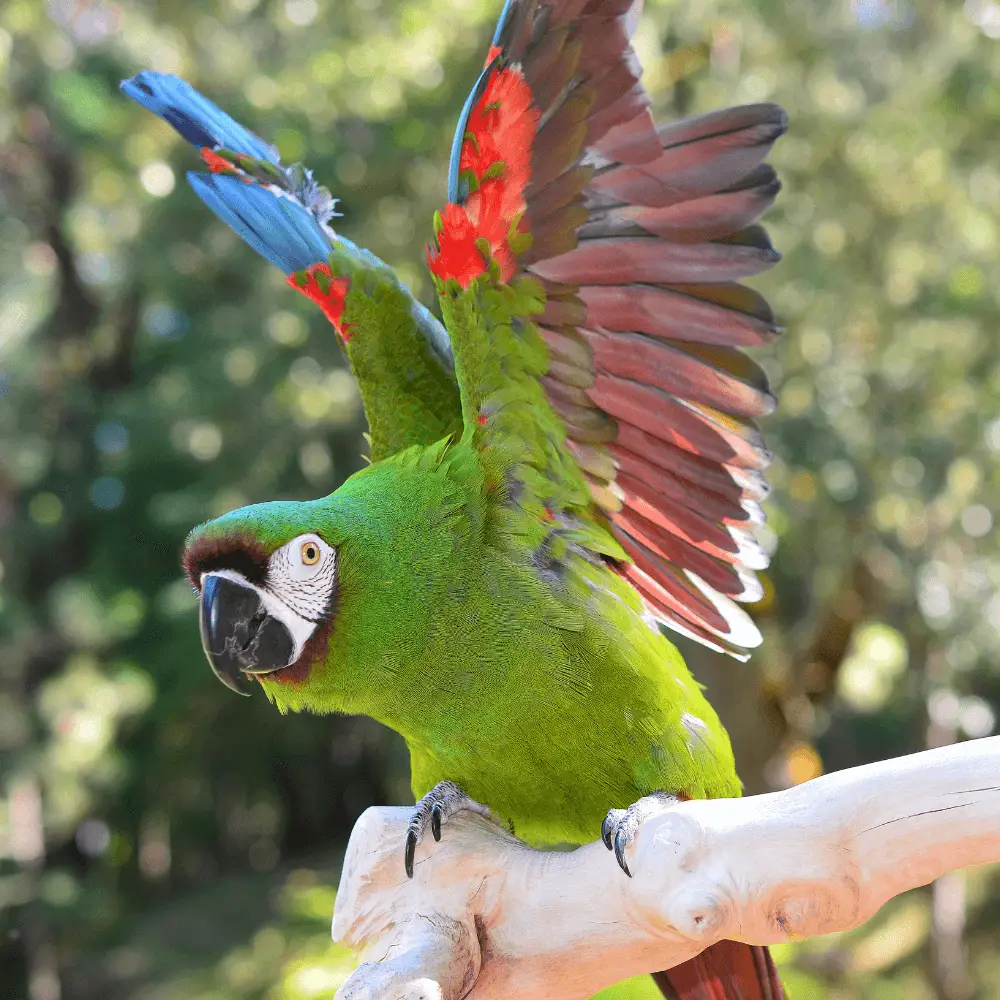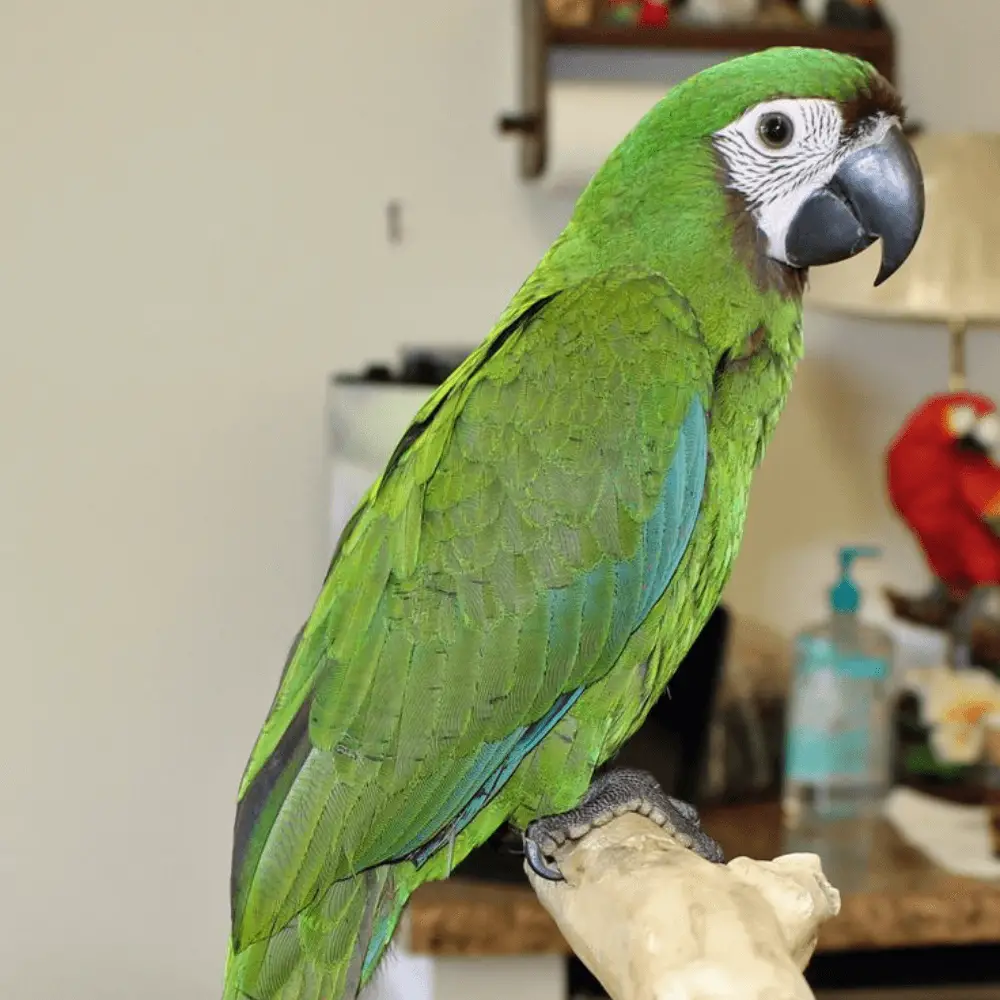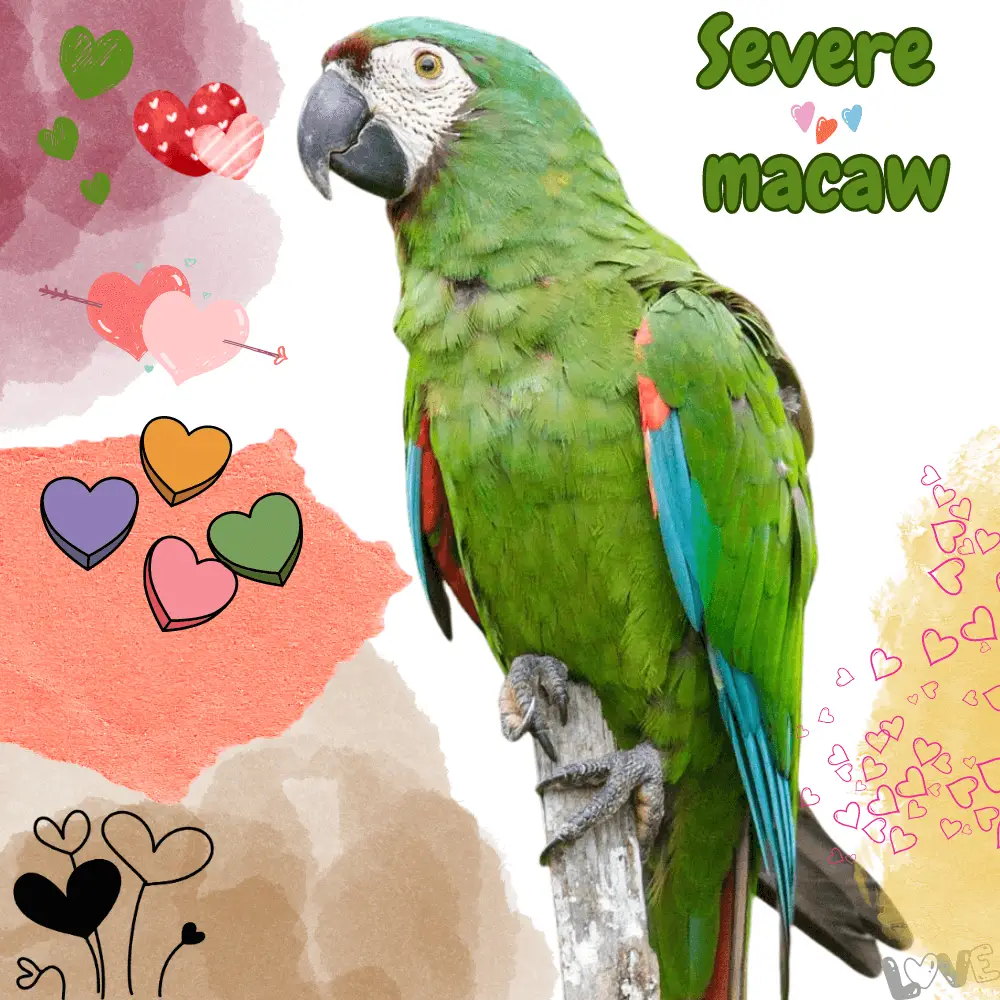Severe macaw: or chestnut-fronted macaw (Ara severa severa) Attractively cute and open-minded, macaws have become popular birds to keep as pets.
Larger than small parrots, these birds pack a lot of personality into smaller, easier care for the package. They are also among the best talkers and enjoy their family time.
Where does a macaw live

The sharpened parrot is native to southern Central America and northern South America.
It is particularly known in Panama and Bolivia. There is also a population in Brazil, where the bird is generally known as the Brazilian Green Parrot. This species has been introduced to Florida as well.
In the wild, the ferocious Macaw enjoys forests and habitats of all kinds as long as trees are available. They generally prefer areas that are subject to river flooding. They can be hard to find because they enjoy caving in hollows high in the trees.
Farm fields provide plenty of food for these birds outside of their natural diet. It is not uncommon to find very large and noisy flocks foraging for fields early in the morning. For this reason, they are often seen as a nuisance by farmers.
Severe bacteria can also be seen regularly in mud tweezers along with a variety of other birds. These mud mounds are popular spots for many parrots. This clay is believed to complement their diet, protecting against toxins in their food and providing them with essential minerals.
Severe macaw size
One of the popular small parrot species, the spiny parakeet reaches about 15 to 20 inches in length from the beak to the tip of the tail feathers. Weighs less than one pound.
Severe macaw lifespan

Some are expected to live up to 30 years, and some even longer.
Severe macaw behavior
It is good to note that severe macaws have not been bred in captivity for as long as other parrots. This means that many of their natural instincts are still intact because they have not been fully domesticated. When socialized as young birds, they make ideal pets.
Friendly and comical, the macaw’s large, fierce personality makes it a favorite among bird lovers. With adequate socialization, shy parrots bond quickly with their owners, respond well to training, and boast impressive speech abilities.
They are one of the best-talking parrots, but not every bird will take to them. Many cuties can speak with surprising clarity and their high-pitched voice is a very pleasant thing to listen to. They can also develop a fairly large vocabulary.
These sound great, but they can get to be too much for some owners and their neighbors. They are very loud birds for their size and are known to call in the morning and again at noon and sunset. As a pet, it is better to ignore unwanted cries than to scold the bird. They are smart enough to eventually learn from errors.
Severe macaws are also very inquisitive and inquisitive. They love puzzles and games and can become fascinated with shiny things.
You will quickly find that your jewelry is best kept out of the bird’s eye or it could be accidentally damaged.
One unique feature of shrews is that they generally don’t like a lot of touches. Often, they are more content to be near their owner or on their shoulder, but cuddling and petting are not their strong suit.
This may come from their somewhat aggressive behavior in the wild, which has led to the name “extreme”. In captivity, this isn’t generally a problem, but don’t be alarmed if your bird is a little off at times.
Severe macaw colors

Severe macaws are mostly green iridescent with darker chestnut-colored spots on their foreheads and under their beaks. The crown of the head flaunts patches of iridescent blue feathers and bears distinct red spots on the edges of its wings.
The tail feathers are blue with red undersides, which shine when in flight.
This type displays the traditional correction of the bacterial face. They also have fine dark feather lines surrounding the eyes, which are unique among parrots.
The bird’s beak and feet are gray and the irises of their eyes are a beautiful yellow gold. It is a monomorphic bird, so the male and female are identical.
Severe macaw care
While macaws are known to be very social, all parrots require a certain amount of training to ensure they stay tidy. If you want to adopt an extreme toy macaw, the first thing you should do is make sure you have enough time to spend with your pet each day.
Without adequate socialization and mental stimulation, hardy Bactrians can grow bored and depressed. This can lead to destructive behavior and stress-related illnesses.
Screaming macaws can be fun pets, but they require time and specialized care that not everyone can provide. They actually thrive on family time because it replicates the feeling of a flock, and unlike some other parrots, they don’t tend to become the only one bird.
Make sure you are prepared before bringing a parakeet or other parakeet into your home. You will need to think about the costs of owning such a pet as well. Things like vet bills, costs of high-quality feed, and cage and play prices add up quickly.
For such a small bird, you’ll find that a larger cage will do just fine for her. These birds need a lot of space and are used to long flights in the wild, so it’s best to go larger than you think he’ll need.
Food for macaw
Like any other pet bird, parakeets must have adequate nutrition to thrive. Feed the Sharp Parakeet a varied diet consisting of a high-quality seed and pellet mix. The bird will also benefit from daily offerings of fresh, bird-safe fruits and vegetables to ensure that its nutritional requirements are met.
Severe macaw training
Sharp macaws may be miniature macaws, but they’re still built for muscle power.
In the wild, the keen macaw may fly several hundred miles a day in search of food. Because of this, it is important to provide your pet with enough exercise to maintain a healthy body.
Extreme pet parakeets should be allowed at least two to four hours of play outside of their cage each day. This will allow the birds to stretch their muscles and exercise their wings and beak.
You should also provide your birds with plenty of toys. They are quite intelligent and will absolutely enjoy any puzzles or games you can give them.
To keep the birds stimulated, rotate the toys often so they always feel like there is something new to play with.
Related article:

